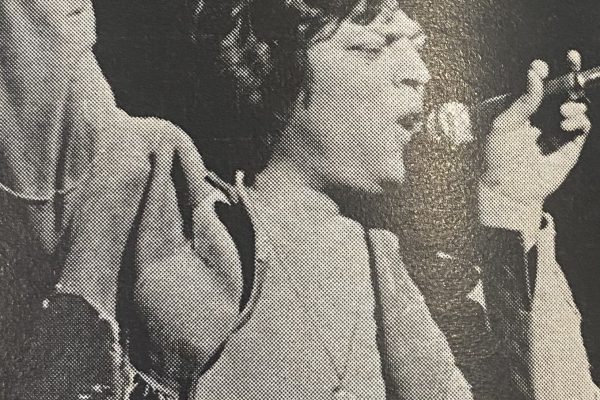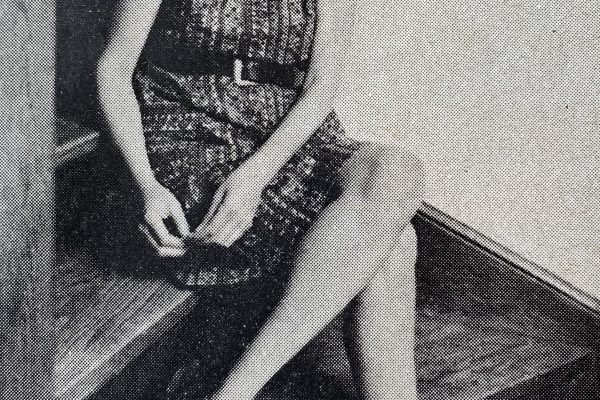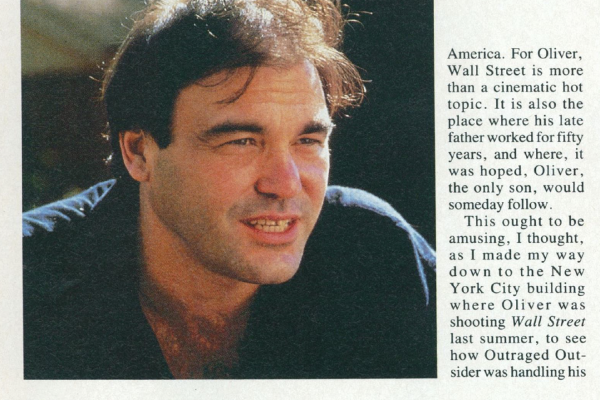Original Publication Newsweek – August 27, 1973
It’s as if a guerrilla stole inside Walt Disney’s Magic Kingdom and set off a bomb. Last year, controversial animator Ralph Bakshi unleashed the first X-rated feature-length cartoon, “Fritz the Cat.” Fritz did things Mickey Mouse never dreamed and grossed millions. Now comes HEAVY TRAFFIC, a much more sophisticated work that brilliantly breaks many previous rules of animation.
In “Heavy Traffic,” Brooklyn-born Bakshi, 33, takes an unsentimental journey through his old ghetto hangouts. He draws on the fears and fantasies of his own adolescence to create a devastating portrait of the coming to manhood of Michael, a virginal cartoonist of 22, surrounded by the raucous low life of New York City. Scenes of the city pulsate with black humor, powerful grotesquerie and peculiar raw beauty. Episodes of violence and sexuality are both explicit and parodies of flesh-and-blood porn. Bakshi’s celebration of urban decay is like singing an off-key love song to a garbage heap, and his images, disturbing yet funny, are designed to outrage Italians, Jews, blacks, women, the church, the Mafia and cripples.
Rebuke: Michael stays in his room and draws all day. His Jewish mother, who makes Mrs. Portnoy look like Little Bopeep, wails, “I died the day I married a goy,” and aims a meat cleaver below the waist of Michael’s faithless punk slob of an Italian father. In one scene Michael escapes to the roof of his building and runs into Mose, a crazy old black man. Together Mose and Michael try to set Michael’s pet pigeon free. First the pigeon won’t go. When he finally flies away—in a final rebuke to anyone who thinks the captive ought to respect his liberators—he splatters Michael’s eye. “We’s all niggers, boy,” cackles Mose, “only some of us don’t know it yet.”
Bakshi switches from live action to animation with dramatic effect. A real Michael plays a pinball machine, then a cartoon Michael watches old Clark Gable movies. The graphics are astounding: at one point Michael and his hustling black “chick,” Carole, occupy two empty stools in Edward Hopper’s famous painting of an all-night greasy spoon. There are cartoons within cartoons and a sequence featuring old Bakshi family portraits. “Heavy Traffic” is peopled with the melancholy dregs of the metropolis, but Bakshi’s intelligence and technical mastery weave them into a fascinating nightmare, as full of impudence and coarse energy as New York itself.
In person Ralph Bakshi is not unlike one of his own creations—a restless, warm-hearted, tough-talking city boy who’s haunted by his roots. The window of his Hollywood office has been pasted over with a poster of the Manhattan skyline. “New York is special,” says Bakshi. “The congestion, so many ethnic groups caught together, trying to rise above each other sexually, financially—always competing for power. It breeds filth, raw energy. Imagine growing up in the middle of all that.”
Imagine. When he was 8, little Ralph, the son of Russian immigrants, saw a Mafia leader’s head blown off from two feet away. The blood splattered all over his shirt, and he continued playing in the street of his Jewish-Italian-black neighborhood. By the time he was 17, a moody and erratic loner at school, he had gotten into “street trouble.” In desperation, a guidance counselor, noting his penchant for doodling, transferred him to an industrial-arts school where she told him he could draw all day, even draw on the walls if he wanted. “Drawing just hit me like a thunderbolt,” Bakshi says. He graduated with the cartooning medal, became the youngest animator in the business and wound up running Terrytoons on CBS television. But he hated it.
“I busted out of Brooklyn with my art,” says Bakshi. “I didn’t want to use my ability on crap and making money that was also destroying kids’ minds.” Bakshi thinks animation is much too important to waste on trivia and is convinced it can do things live action can’t. “Animation can express total fear, totally happiness and visually show emotions or hangups,” he explains. “It can get as serious as live action, then turn on a dime and be a cartoon and make people laugh. Disney has shown us only one way. I want to push toward reality.”
So far the push has been successful. “Heavy Traffic” is breaking box-office records in Los Angeles, delighting most critics and enraging others. Bakshi is head of his own company in Los Angeles where 25 animators are at work on his next feature, “Coon Skin,” a comic homage to blacks produced by Al (Godfather) Ruddy, and he has a four-picture deal with Paramount, “if I want it.”
Still, Bakshi feels isolated. “I’m very much alone,” he says. “Nobody really knows what I’m doing.” He is upset by the X ratings given to both “Fritz” and “Traffic” because of explicit language and sex scenes. “X has always meant poison,” says Bakshi. “The TV talk-show people don’t want me. They think I’m going to drop my drawers or something.”
Charges: Bakshi claims he doesn’t set out to offend people. “’Traffic’ is based on truth, what people’s feelings are all about, desperate, hungry people trapped in a specific emotional and physical environment.” He responds to the various charges of offense. Women: “The movie shows how screwed up we are in our sexual attitudes in this country.” Blacks: “I love black people. I’m very sympathetic to them.” The Mafia: “Bleep ‘em.”
Making “Heavy Traffic” was “like going to a psychiatrist.” Bakshi even used his own voice for two of the characters, and the catharsis seems to have worked. “I couldn’t do this if I weren’t free,” he says. “It’s like looking back in anger.”
This article is typed from the original material. Please excuse any errors that have escaped final proofreading.




No Comments